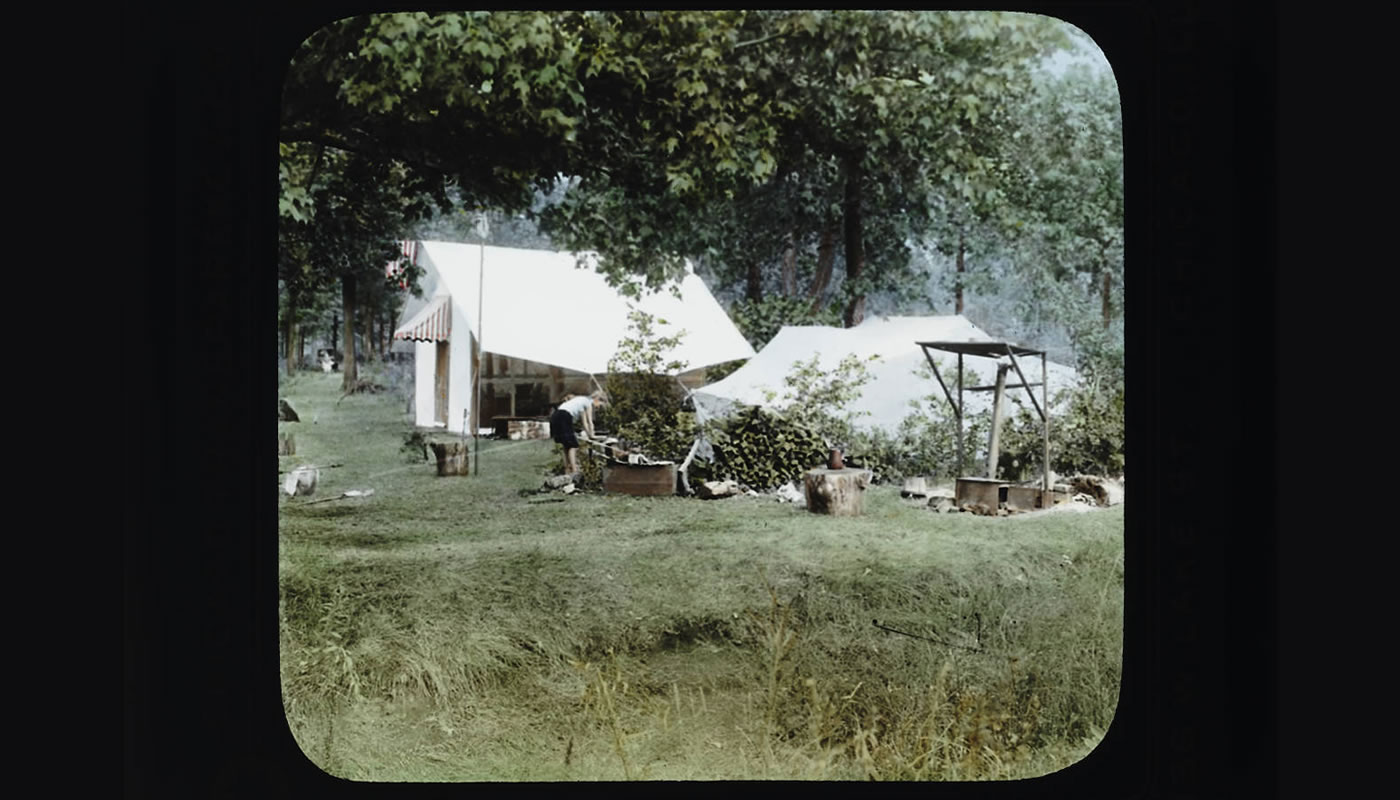Almost since the forest preserves’ founding, people have camped there in some form or another. In the preserves’ early years, it was virtually anything goes. People camped wherever and whenever they pleased, and were even encouraged to do so, as described in this blog post by Natalie Bump Vena:
In 1922, The Chicago Defender reported that thousands of Chicagoans “saved rent” over the summer by living in “tent colonies” located in the forest preserves. In 1921, the District described these dwellings in romantic terms, writing, “there is a growing tendency on the part of many families to pitch week-end camps, while others remain during longer periods, some passing the entire summer under the shade of the great woods.”
That intensive use had negative effects on the land, though, and in the 1930s, the Forest Preserve District began to restrict camping to several established youth camps, including some operated by outside organizations.
As usage trends shifted, some of the camps on forest preserves property were eventually decommissioned. Traces of Boy Scout Camp Kiwanis and Camp Sokol, which were vacated in the 1970s, still can be found on either side of Tuma Lake near the Little Red Schoolhouse in Willow Springs. More recently, Camp Falcon in Tinley Park was closed, its property merged with nearby Camp Sullivan during that campground’s recent renovation.
One of the most active camps over the past century, and perhaps the best documented, was Camp Reinberg in Palatine. Many groups traveled there to enjoy wooded Deer Grove and the camaraderie and silliness found only in a camp full of kids. Fortunately, Camp Reinberg is one of the campgrounds being revived for a new generation. Across the forest preserves, the tradition of happy voices around the campfire will continue.

